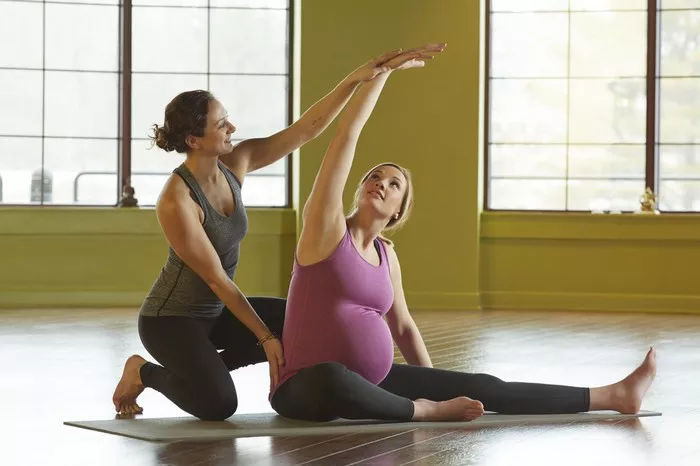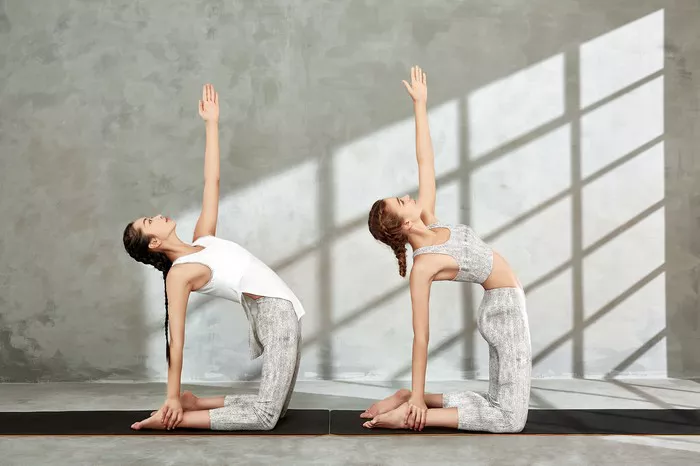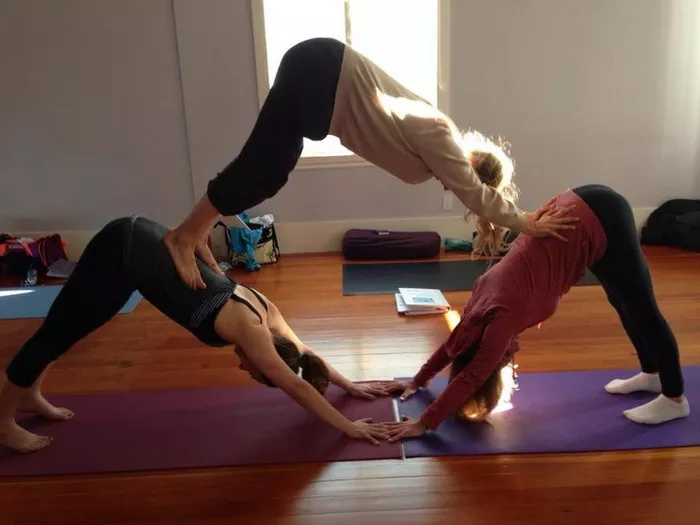Pregnancy is a transformative journey marked by physical, emotional, and mental changes. Prenatal yoga offers a holistic approach to support mothers-to-be through this significant phase of life. With its focus on gentle stretches, controlled breathing, and relaxation techniques, prenatal yoga can help alleviate common pregnancy discomforts, enhance flexibility, build strength, and prepare the body for childbirth. In this comprehensive guide, we’ll explore the best prenatal yoga moves tailored to meet the unique needs of expectant mothers.
1. Cat-Cow Stretch (Marjaryasana-Bitilasana)
The Cat-Cow stretch is a foundational pose in prenatal yoga that helps to alleviate back pain, improve spinal flexibility, and promote optimal fetal positioning. To perform this pose, start on your hands and knees in a tabletop position. As you inhale, arch your back, dropping your belly towards the mat while lifting your head and tailbone (Cow pose). As you exhale, round your spine upwards, tucking your chin to your chest (Cat pose). Repeat this fluid movement, syncing breath with movement, for several rounds.
2. Child’s Pose (Balasana)
Child’s Pose is a comforting and restorative pose that provides relief from fatigue, stress, and discomfort during pregnancy. Begin by kneeling on the mat, then lower your hips back towards your heels as you stretch your arms forward and rest your forehead on the ground. Allow your belly to gently drape between your thighs, promoting relaxation and deep breathing. Stay in this pose for several breaths, focusing on releasing tension in the back, hips, and shoulders.
3. Warrior II (Virabhadrasana II)
Warrior II is a standing pose that strengthens the legs, opens the hips, and cultivates mental focus and stamina. To enter this pose, step your feet wide apart, with your front foot pointing forward and your back foot turned slightly inward. Bend your front knee to a 90-degree angle, keeping it aligned with your ankle, while extending your arms parallel to the floor, reaching in opposite directions. Gaze over your front hand and hold the pose for several breaths, then switch sides.
4. Goddess Pose (Utkata Konasana)
Goddess Pose is a powerful standing posture that strengthens the legs, pelvic floor, and inner thighs while improving balance and endurance. Begin by standing with your feet wider than hip-width apart, toes turned out at a comfortable angle. Bend your knees and sink your hips down towards the mat, keeping your spine tall and chest lifted. Bring your palms together at heart center or extend your arms out to the sides. Hold the pose for several breaths, feeling the strength and stability it provides.
5. Supported Bridge Pose (Setu Bandhasana)
Supported Bridge Pose is a gentle backbend that helps alleviate back pain, improve circulation, and calm the nervous system. Lie on your back with your knees bent and feet hip-width apart. Place a bolster or folded blanket under your sacrum for support. Press into your feet as you lift your hips towards the ceiling, engaging your glutes and thighs. Keep your chin slightly tucked to maintain length in the neck. Hold the pose for several breaths, then slowly release back down to the mat.
6. Legs-Up-the-Wall Pose (Viparita Karani)
Legs-Up-the-Wall Pose is a soothing inversion that reduces swelling in the legs and feet, relieves lower back tension, and promotes relaxation. Sit sideways next to a wall with your hip touching it. Swing your legs up the wall as you lower your upper body onto the mat, forming an L-shape with your body. Keep your arms relaxed by your sides or place your hands on your belly for added support. Close your eyes and focus on deep, rhythmic breathing as you rest in this pose for several minutes.
7. Modified Pigeon Pose (Eka Pada Rajakapotasana Variation)
Modified Pigeon Pose is a gentle hip opener that relieves tension in the hips and lower back while accommodating the changes in the pregnant body. Begin in a tabletop position, then slide one knee forward towards the same-side wrist, allowing the shin to rest on the mat at a diagonal angle. Extend your opposite leg back behind you, keeping the hips square. You can use props such as bolsters or blankets under the hips for support. Hold the pose for several breaths, then switch sides.
8. Seated Spinal Twist (Ardha Matsyendrasana)
Seated Spinal Twist is a rejuvenating pose that releases tension in the spine, improves digestion, and massages the internal organs. Sit on the mat with your legs extended in front of you. Bend your right knee and place the sole of your right foot on the outside of your left thigh. Inhale to lengthen your spine, then exhale as you twist towards the right, placing your left elbow on the outside of your right knee and your right hand on the mat behind you for support. Hold the twist for several breaths, then repeat on the opposite side.
9. Butterfly Pose (Baddha Konasana)
Butterfly Pose is a gentle hip opener that alleviates tightness in the groin, hips, and inner thighs, promoting relaxation and flexibility. Sit on the mat with your knees bent and feet touching, allowing your knees to fall open to the sides. Hold onto your feet or ankles with your hands, lengthening through the spine as you gently press your knees towards the floor. You can use props such as blocks or bolsters under your knees for support. Hold the pose for several breaths, feeling the stretch deepen with each exhale.
10. Corpse Pose (Savasana)
Corpse Pose is a final relaxation pose that integrates the benefits of the practice, promoting deep relaxation, stress reduction, and a sense of inner peace. Lie on your back with your arms by your sides, palms facing up, and legs extended comfortably. Close your eyes and allow your body to sink into the mat, releasing any tension or effort. Bring your awareness to your breath, allowing it to become slow, smooth, and natural. Remain in this pose for several minutes, enjoying the profound sense of relaxation it brings.
Conclusion
Incorporating these prenatal yoga moves into your daily routine can help you navigate the physical and emotional changes of pregnancy with grace and ease. Remember to listen to your body, honor its limitations, and modify poses as needed to suit your individual needs and comfort level. By nurturing your body, mind, and spirit through the practice of prenatal yoga, you can cultivate a deeper connection with yourself and your growing baby, preparing for the transformative journey of childbirth and motherhood ahead.






















